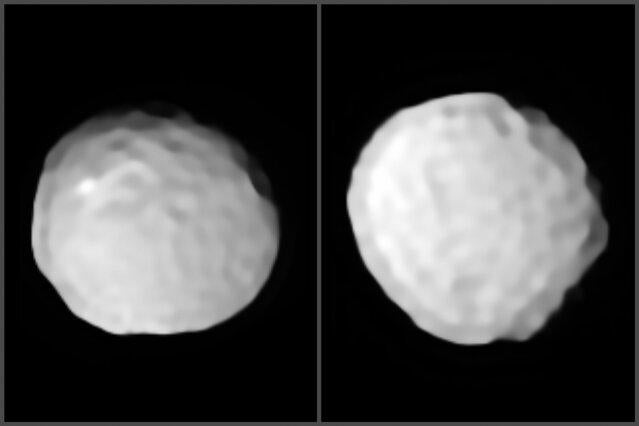Scientists reveal strange ‘golf ball’ asteroid
'It’s like discovering a new world'

Your support helps us to tell the story
From reproductive rights to climate change to Big Tech, The Independent is on the ground when the story is developing. Whether it's investigating the financials of Elon Musk's pro-Trump PAC or producing our latest documentary, 'The A Word', which shines a light on the American women fighting for reproductive rights, we know how important it is to parse out the facts from the messaging.
At such a critical moment in US history, we need reporters on the ground. Your donation allows us to keep sending journalists to speak to both sides of the story.
The Independent is trusted by Americans across the entire political spectrum. And unlike many other quality news outlets, we choose not to lock Americans out of our reporting and analysis with paywalls. We believe quality journalism should be available to everyone, paid for by those who can afford it.
Your support makes all the difference.Scientists have discovered an asteroid with such a strange surface that they have named it the "golf ball".
The rock is the most heavily cratered object ever to be seen in the asteroid belt and is "like discovering a new world", according to the researchers who found it. And in addition to the strange holes, it also has a mysterious "bright spot" on its surface.
It is also quite large: the rock, known as Pallas, is the third-biggest object in the asteroid belt, and about a seventh the size of our moon. It was first discovered in 1802, but many of its details have remained mysterious.
Now scientists have revealed the holey surface of the asteroid in images for the first time – and suggest they could also help solve some of the other mysteries about the object.
Over the centuries since it was discovered, astronomers noted that Pallas takes a strange route through the asteroid belt, following a tilted journey when compared with most of the other objects that surround it.
Now researchers think that the surface is a consequence of its orbit. As it moves around the Sun, it has to smash its way through to take its lonely course. Because it comes at an angle, the collisions are especially damaging, leaving the cratered service that has now been revealed in the images.
“Pallas’ orbit implies very high-velocity impacts,” says Michaël Marsset, the paper’s lead author said in a statement.
“From these images, we can now say that Pallas is the most cratered object that we know of in the asteroid belt. It’s like discovering a new world.”
The scientists also found one huge crater on the object's surface, which is thought to be about 400 kilometres wide. Research suggests that such a large basin would probably have been caused about 1.7 billion years ago, when Pallas was thought to be hit by an object between 20 and 40 kilometres wide, which would have thrown the pieces out into space.
As well as the huge variety of holes, Pallas also has a bright spot in its surface, researchers discovered while examining the object.
Scientists don't know where that is coming from. The most likely theory is that it is a huge chunk of salt, which may have been exposed after one of its collisions.
"People have proposed missions to Pallas with very small, cheap satellites," Marsset says. "I don't know if they would happen, but they could tell us more about the surface of Pallas and the origin of the bright spot."
Join our commenting forum
Join thought-provoking conversations, follow other Independent readers and see their replies
Comments